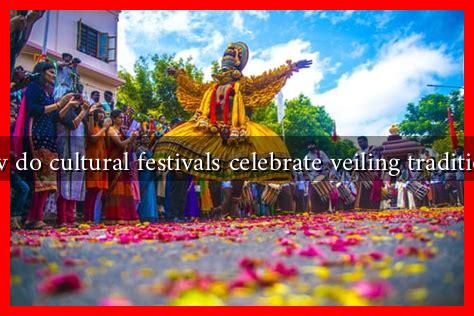-
Table of Contents
- How Do Cultural Festivals Celebrate Veiling Traditions?
- The Significance of Veiling Traditions
- Cultural Festivals as Celebratory Platforms
- Showcasing Traditional Attire
- Workshops and Discussions
- Case Studies: Festivals Celebrating Veiling Traditions
- The Impact of Cultural Festivals on Communities
- Conclusion
How Do Cultural Festivals Celebrate Veiling Traditions?
Veiling traditions have been an integral part of various cultures around the world, often symbolizing modesty, identity, and spirituality. Cultural festivals serve as vibrant platforms to celebrate these traditions, showcasing the rich tapestry of customs associated with veiling. This article explores how cultural festivals honor veiling traditions, the significance of these practices, and the impact they have on communities.
The Significance of Veiling Traditions
Veiling is not merely a practice of covering; it is deeply rooted in cultural, religious, and social contexts. The significance of veiling can be understood through various lenses:
- Religious Identity: For many Muslim women, veiling is a manifestation of their faith, representing obedience to religious tenets.
- Cultural Heritage: In many cultures, veiling is a tradition passed down through generations, symbolizing familial and cultural ties.
- Personal Empowerment: Some women view veiling as a choice that empowers them to express their identity and autonomy.
Cultural Festivals as Celebratory Platforms
Cultural festivals provide a unique opportunity to celebrate veiling traditions, allowing communities to come together and share their customs with a broader audience. These festivals often feature a variety of activities that highlight the beauty and diversity of veiling practices.
Showcasing Traditional Attire
One of the most visually striking aspects of cultural festivals is the display of traditional attire, including various styles of veils. For instance:
- Hijab: Commonly worn by Muslim women, the hijab is often showcased in vibrant colors and intricate designs during festivals.
- Chador: In Iranian festivals, the chador is celebrated as a symbol of cultural identity, often adorned with beautiful patterns.
- Dupatta: In South Asian festivals, the dupatta is worn as a sign of modesty and is often embellished with embroidery and sequins.
These displays not only celebrate the beauty of veiling but also educate attendees about the cultural significance behind each style.
Workshops and Discussions
Many cultural festivals incorporate workshops and panel discussions that delve into the history and significance of veiling traditions. These sessions often feature:
- Guest Speakers: Scholars and community leaders share insights on the cultural and religious aspects of veiling.
- Interactive Workshops: Attendees can learn how to style different types of veils, fostering a hands-on understanding of the practice.
- Storytelling Sessions: Personal narratives from women about their experiences with veiling can promote empathy and understanding.
Case Studies: Festivals Celebrating Veiling Traditions
Several cultural festivals around the world have made significant strides in celebrating veiling traditions:
- Islamic Arts Festival (Qatar): This festival showcases Islamic art and culture, featuring fashion shows that highlight traditional veiling styles.
- World Hijab Day (Global): Celebrated annually on February 1st, this event encourages women of all backgrounds to wear the hijab for a day, fostering understanding and respect.
- International Women’s Day (Various Locations): Many events on this day include discussions on women’s rights and the role of veiling in empowerment.
The Impact of Cultural Festivals on Communities
Cultural festivals celebrating veiling traditions have a profound impact on communities:
- Fostering Inclusivity: These festivals create spaces for dialogue and understanding among diverse groups.
- Preserving Heritage: They play a crucial role in preserving and promoting cultural heritage, ensuring that traditions are passed down to future generations.
- Empowering Women: By highlighting the voices and experiences of women who veil, these festivals empower them to share their stories and challenge stereotypes.
Conclusion
Cultural festivals serve as vital platforms for celebrating veiling traditions, offering a space for education, empowerment, and community building. Through the showcasing of traditional attire, engaging workshops, and meaningful discussions, these festivals not only honor the significance of veiling but also promote inclusivity and understanding among diverse populations. As we continue to navigate a globalized world, the celebration of such traditions becomes increasingly important in fostering respect and appreciation for cultural diversity.
For more information on cultural festivals and their impact, you can visit UNESCO’s Cultural Diversity page.

